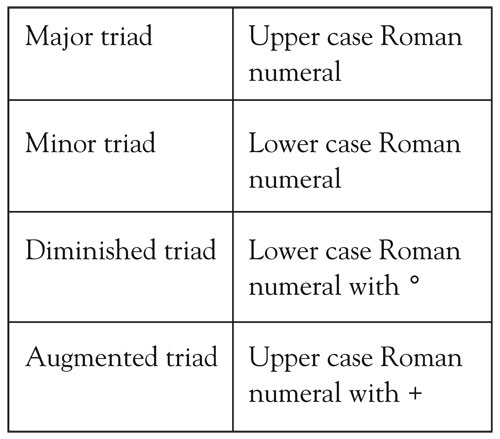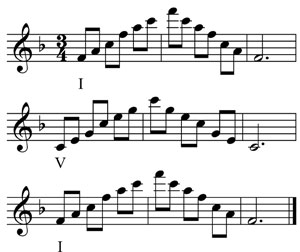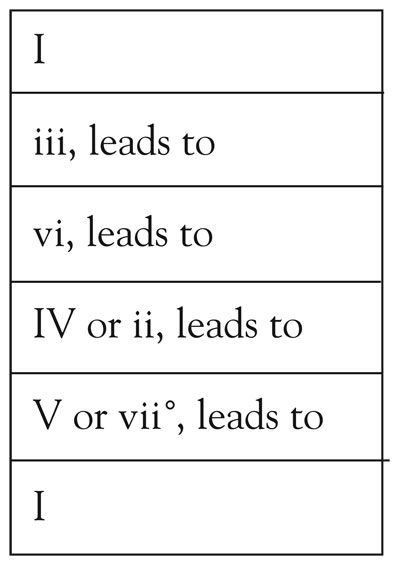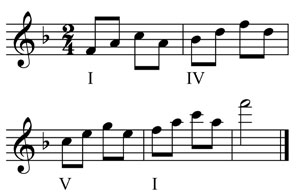Freshman music majors often ask, “Why do I need to take music theory? I just want to play the flute!” The short answer is because the course is required for graduation. However, the long answer is a bit more involved. Most students have been playing the flute for a number of years. During these years, they have successfully participated in school band and orchestra programs and built a musical foundation of certain sounds and rhythms. They may recognize melodic and rhythmic patterns and perhaps even sense harmonic movement. Hopefully, they have also acquired a basic knowledge and understanding of form.
This is all good, but it is only the beginning. The study of music theory enhances and builds upon this musical foundation. Music theory provides the tools to become an informed and expressive performer. One student said to me, “My high school teacher taught me the notes. You teach me what to do with them.” This is what a music education curriculum composed of applied studies, music theory, and music history should do for a student. These subjects help students develop an artistic, informed performance.
Where we fail as teachers is in not helping students fully understand the connections between music theory and their applied studies. A student who does not understand these connections is the one who will ask why he should study music theory.
Theory Curriculum
University theory curriculum is divided into two areas: The fundamentals or elements of music and the structural elements of music. Most private and public school teachers teach some basic fundamentals of music that probably include notation, rhythm, tonality, key signatures, scales, intervals, and perhaps some transposition work. When students enter a college program, they are tested on these fundamental elements. If they pass the entrance exam, they are placed in a theory class. If not, they usually take an elements of music class to sharpen their skills before undertaking the music theory sequence.
Because of the time constraints, most high school teachers don’t discuss the structural elements of music with their students. Structural elements of music include the study of cadences, non-harmonic material, melodic organization, harmonic progressions, modulation, and musical forms.
Many university programs may even delay the study of music history until students have some foundation in the structural elements. However, as soon as students have a grasp of the basics, each of these topics is examined from a historical point of reference. The goal is for students to develop a clear understanding of what happened theoretically in the Renaissance, Baroque, Classical, Romantic, and Contemporary periods.
But I Hate Theory
Each of us has had students who expressed this sentiment – a clear indication that they are struggling with the course. You ask them: Are you attending class? Are you completing and handing in your homework? Do you practice sight singing (solfeggio)? Do you ask questions in class? Do you have a theory tutor? Do you have a study group? Can you read bass clef fluently? Are you signed up for piano class? The answer to all the questions is usually a resounding “No!”
Aural Skills
Further conversation with the student often reveals that they are having difficulties with the aural skills portion of the class, which includes sight singing (solfeggio) and dictation, both melodic and harmonic. In melodic dictation students write down what they hear, usually a line of music with the correct notes and rhythms. At first the melodies are stepwise or triadic, but as the year progresses the melodies include skips and modulations. The goal with harmonic dictation is for students to be able to write down an entire chorale after hearing it played four times or as the jargon goes, on “four plays.” The early learning steps include the ability to identify cadences and write down chord progressions. As students’ dictation abilities develop, the chorales may include modulations and non-harmonic material as well.
Generally, flutists with aural skill difficulties have never sung, taken piano lessons, or been asked to think about music in an analytical or aural way. They have just played the notes. Many flutists are linear or horizontal thinkers, meaning that they only hear one melodic line. Unfortunately four-part dictation requires that they become vertical thinkers also.
Preparing a Successful Student
In order to create successful college students, preparation should start when they are in high school. The first step is to help them learn to match their voice to another pitch. Ask them to discover their vocal range by singing as many pitches as they can – low to high and high to low. Remind them that the rules for body alignment and breathing while playing a flute apply to voice production as well.
Then, ask students to sing a low note in their range, G4 for female students or G3 for males, and slowly ascend one octave. Then do the opposite; sing a high note and descend to an octave lower. Most instrumental students do not like to sing aloud. Use humor and encouragement to get them to let go and be willing to try. Most students are impatient with their first attempts, but need to be reminded that they did not learn to play the flute in one day.
Try this other exercise that is quite similar to the vocal exercise above. Have two flutists stand back to back. One chooses a note to play. The other plays up and down the flute until he can find the note that the other flutist chose. With practice, many flutists can learn to match another player’s note immediately.
Knowledge of Fundamentals
Most of us are confident in teaching students to play scales and arpeggios because we know that these two elements are the major building blocks in developing a solid technique. However, the study of scales and arpeggios also helps students develop super aural technique skills.
Arpeggios
A triad is a chord of three notes: A root (the lowest note), a third above the root, and a fifth above the root. The quality of a chord is either major, minor, diminished, or augmented. When the notes of a triad are stacked on successive lines or spaces, the triad is in root position. A triad may be constructed on each note of a scale as shown below:

For analysis purposes, each triad is given a Roman numeral designation based on its quality.

In most Western music, a Roman numeral chord progresses to another Roman numeral chord in a natural way. This is called a harmonic progression and refers to the order in which the chords are used in a piece of music. The goal is to teach students to play the most common harmonic progressions on the flute. Playing these progressions on the flute (and perhaps singing them as well), helps students develop their aural skills.
Because the flute is not capable of playing all the notes of a triad at once, we play them in succession in an arpeggio. (Go to Patricia George’s Extras for a copy of the major, minor, diminished, and augmented triads.)
The most common progression is I (tonic) V (dominant) I (tonic). In F major, students play an F-major arpeggio, a C-major arpeggio, and an F-major arpeggio. In order to teach the harmonic movement more obviously, use root position.

When students are proficient in F major, repeat this drill in all major keys. They may need a cheat sheet at first to remember which arpeggio comes next, but the ultimate goal is for them to be able to perform this task by memory. This harmonic progression work develops students’ ears for harmonic movement.
Chord Classification
Over centuries of time, theorists have discovered that each chord belongs in a certain category or classification in terms of its progress to the tonic. In order to use all the chords that are built on a scale, here is a chart to help you make a strong chord progression.

When learning to play chord progressions, start with two chords first, making the progression I – V – I as discussed previously. Then repeat the drill substituting vii˚ for the V. Then add either IV or ii before V or vii˚ etc. Be patient. If necessary make a cheat sheet, but the goal is to learn this drill in every major key.
Those of my students who learned this process in high school did not understand what others found so difficult about theory when they got to college. Learning to play these progressions helps students build a harmonic foundation for their playing and eventually for their aural dictation skills.
Another Singing and Playing Exercise
The next most common chord progression is I (tonic) IV (subdominant) V (dominant) I (tonic). The following exercise is in root position. Students should learn it in all keys – even write it out if necessary. Then in their daily life, they can practice humming or singing it aloud. Again, the goal is to perform this task by memory.
For tuning purposes, you can play the root of the chord as students play the arpeggio. Then switch and have the student hold the root while you play the arpeggio.

Vocalise
Many singers warm-up by singing simple melodies or vocalises on the pure vowel sounds such as ah. Most vocalises are based on triadic or chordal material similar to the examples in this article. The goal is to make the same color or timbre on each note of the exercise. Flutists should practice the previous chordal examples with those same goals. Each and every note should be beautiful. Each tone should be produced with relaxation, and the notes should flow from one to the next with ease. Not only do these exercises improve players’ sounds and ears, but once they can figure out which arpeggio comes next, players’ analysis skills improve immensely.
If you ask any fine teacher or performer if they use their music theory training in their daily life, the answer will be yes. They know the more quickly a musician can recognize and categorize patterns (scales, sequences, arpeggios, chords, intervals, rhythms) the faster he can sight read, and the more musically he will play. Instead of plodding note-to-note, notes and figures become larger groups and phrases. Intonation improves because he understands root (chord progression) movement and knows which note to pay closer attention to in tuning.
When a flutist tells me that he loves his music theory class, I am overjoyed. It means that we have been successful in building a strong foundation in the fundamentals of music. Building a student’s music theory foundation is time consuming. Most high school students have between 30 and 60 minutes per week with their teacher. The quandary for the teacher is always do I teach the flute or do I teach music theory. The answer of course is to teach flute, but hopefully through these ideas, the student can learn the fundamentals of music theory while studying the flute.






